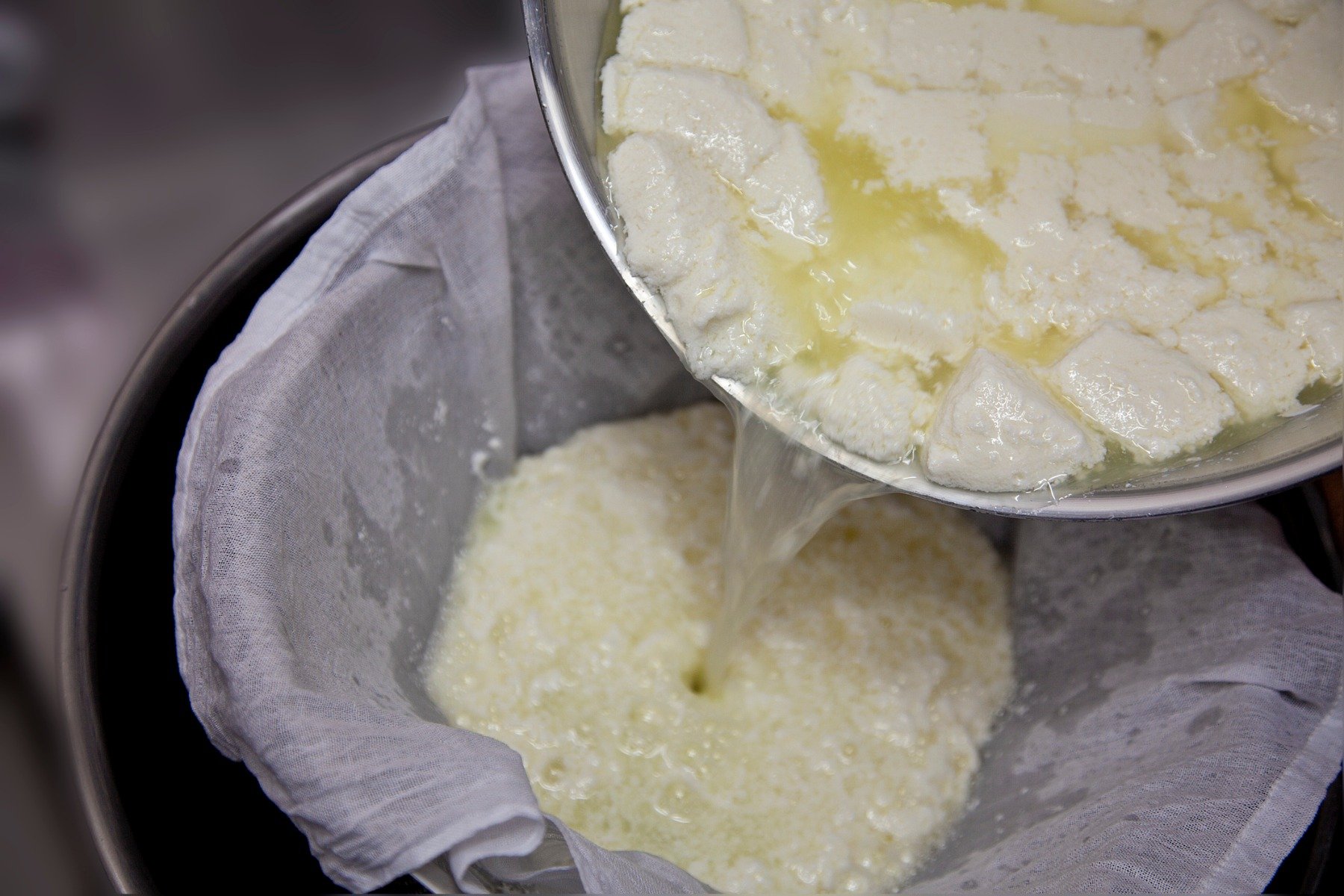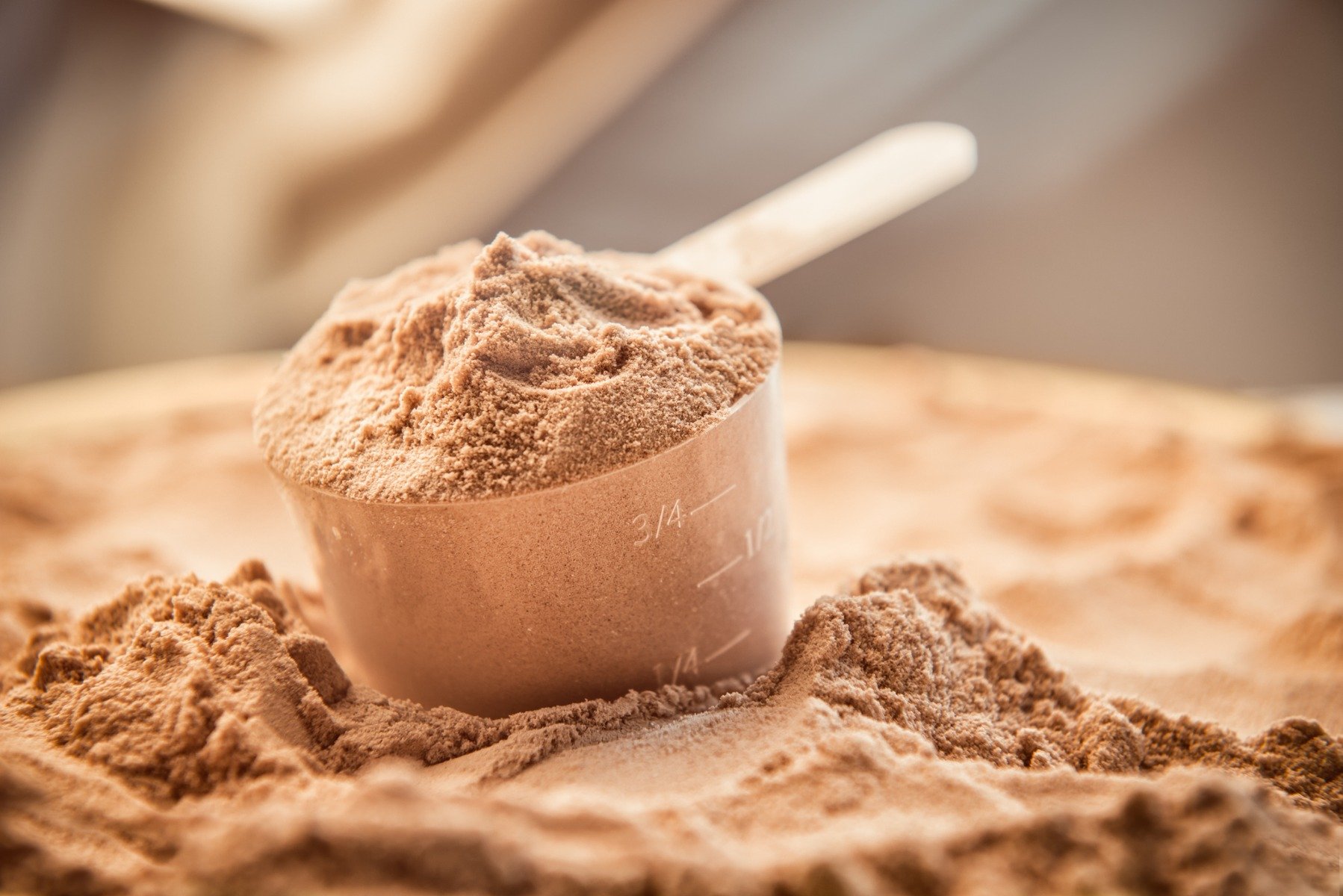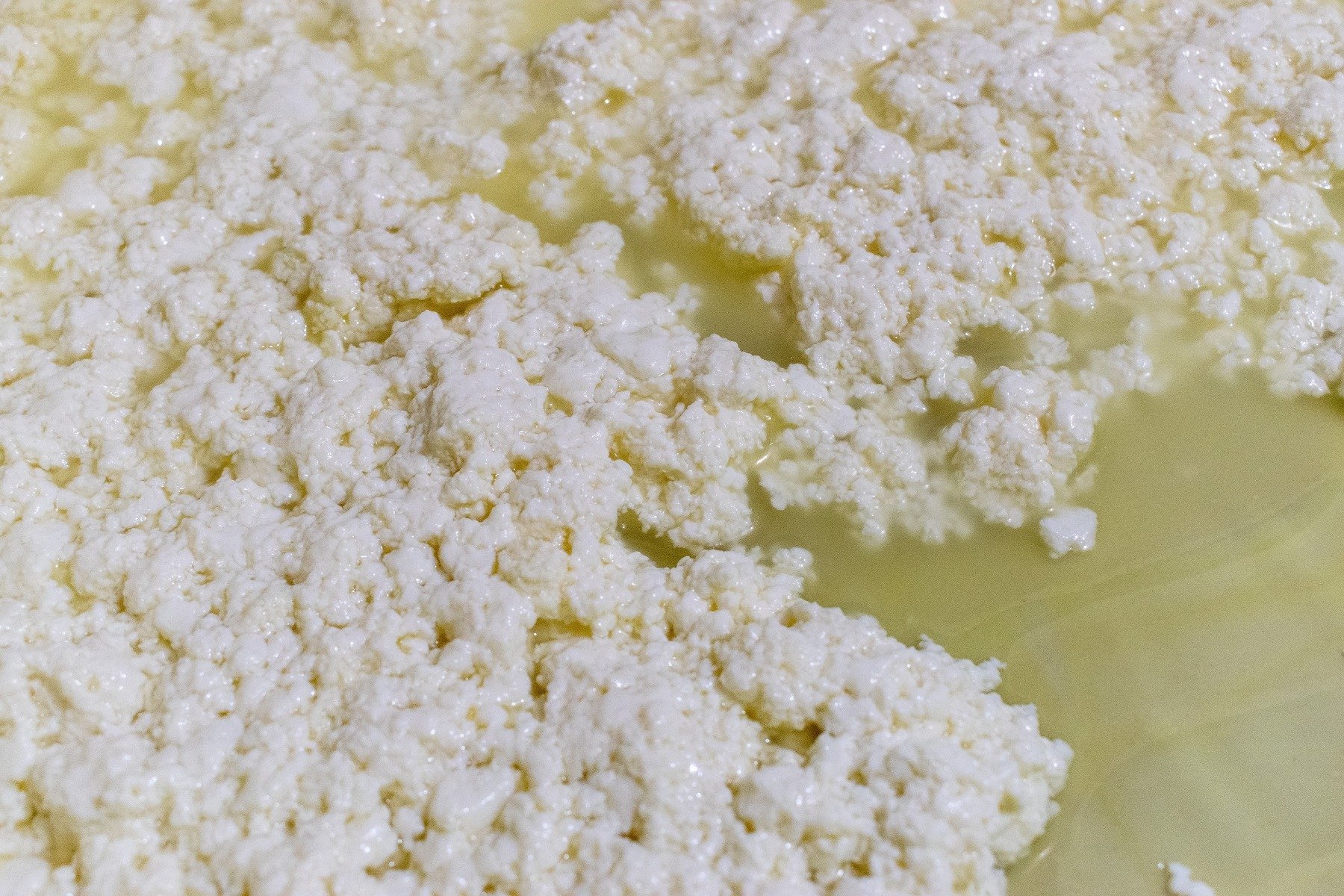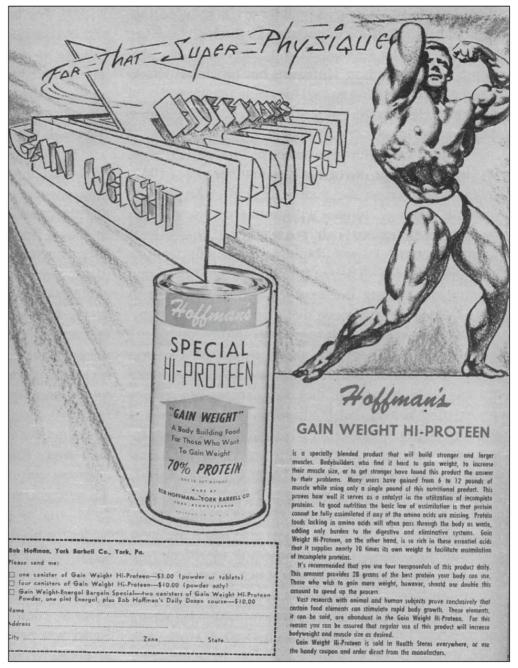Table of Contents
Whey protein belongs to the most common and affordable nutritional supplements for athletes. It may seem that we have always been using whey protein but, in fact, it is not so long ago that whey was considered a waste material in cheese making.
This is what our article is about, the history of whey from its discovery to the present. In the article, you will learn everything about how whey protein is made, what it consists of and what processes it needs to pass before it becomes a protein powder. Get ready for a lot of interesting facts that will surprise and entertain you.
What is whey?
Whey and casein are two popular milk-derived protein powders. Special enzymes are added to the milk to create the separation of curds and the liquid whey. Thus, from 10 liters of milk about 1 kg of cheese is produced and the remaining liquid is whey. In general, whey is found in any milk. Interestingly, whey can be derived from the milk of any mammal that produces milk by the mammary gland, whether it be a cow, a llama, a goat or a cat. Even in the breast milk there is whey. [1] [2]
Whey was formerly considered a waste material in cheese making and it was poured into the rivers or used as a feed compound for animals. However, over time, the Waste Disposal Act has changed and dairy manufacturers have been looking for possible whey use. Soon they discovered that this “waste” was actually very important. [2]

Whey composition
What makes whey so exceptional? First, it is relatively easy to get and at the same time it is both nutritionally and biologically rich. It consists of a significant amino acid profile, as well as several functional components that support immune system. In the table below you will find all the substances of whey composition and their percentage. [1] [2]
| Beta-lactoglobulin | 45 – 57 % |
| Alfa-lactalbumin | 15 – 25 % |
| Immunoglobulins | 10 – 15 % |
| Glycomacropeptides | 10 – 15 % |
| Bovine serum albumin | 8 – 10 % |
| Lactoferrin | 1 % |
| Lactoperoxidase |
Let’s take a look at the importance of each component. [1] [5] [8]
- Beta-lactoglobulin – about 25% of its composition are BCAA amino acids, especially leucine. BCAA branched chain amino acids promote protein synthesis, muscle growth and muscle regeneration.
- Alpha-lactalbumin – contains about 6% of the amino acid tryptophan, which is the basis for serotonin formation, the so-called happiness hormone. At the same time, alpha-lactalbumin is rich in lysine, leucine, theonine, and cysteine. It has the ability to bind minerals such as calcium and zinc and positively affects their absorption.
- Immunoglobulins – Whey contains 4 types of immunoglobulins, namely IgG, IgA,IgM and IgE, which protect antioxidants and significantly improve functioning of the immune system.
- Glycomacropeptides – are produced in the cheese making process from digested casein. They are rich in essential amino acids that promote the absorption of minerals.
- Bovine serum albumin has a varied amino acid profile and promotes fat burning.
- Lactoferrin triggers the production of anti-inflammatory substances that protect the body from the development of hepatitis.
- Lactoperoxidase is important for its antimicrobial properties.

You might be interested in these products:
Health benefits and properties of whey and whey protein
The main advantage of whey protein is that it helps to increase protein and BCAA amino acids intake, which are key to your fitness goals. At the same time, whey protein is a complex protein source, which means that it contains all 9 essential amino acids that the body cannot produce itself and can only obtain from food. All you need is one serving of whey protein and you will enrich your body with all 9 essential amino acids at once.
Whey is a particularly rich source of BCAA, which are amino acids such as leucine, isoleucine and valine, which help to build and maintain muscle mass and can serve as a source of energy for long or intense training. In addition, whey protein can increase performance and strength and helps to reduce weight. [11] [12] [13]
Whey also has a lot of benefits for human health. Many studies confirm that whey can potentially lower cancer risk, improve immunity, reduce inflammation, increase liver function in those suffering from any form of hepatitis. Whey protein also reduces blood pressure, strengthens immunity in HIV patients, and also helps to prevent type 2 diabetes. [14] [15] [16] [17] [18] [19] [20] [21]
Whey protein types
Three types of protein are produced from whey, namely whey concentrate, isolate and hydrolyzate. Each of them contains a different percentage of protein, carbohydrates, fats and lactose, which depends on the whey processing. However, it is important to know the main differences between different protein types which will be explained below.
1. Whey concentrate
Whey concentrate is the least processed whey that contains 70-80% of protein. The rest of the composition is lactose, fat and carbohydrates. It is produced by the filtration process and has the best taste from whey proteins. Whey concentrate is a basic type of protein and is therefore suitable for all beginning athletes and those who are looking for affordable protein source. It can be used as a pre-workout or post-workout supplement or as a protein snack between meals. [9] [10]

2. Whey isolate
Whey isolate contains 90-95% of protein and only minimal percentage or no lactose at all. It is derived by the microfiltration process and is a superior whey protein compared to whey concentrate because it is rapidly absorbed. It is perfect for people who stick to a low-carbohydrate diet and try to reduce weight. It has a small percentage of carbohydrates and sugar. It is suitable as a pre-workout or post-workout supplement for its quick absorption and good digestibility. [9] [10]
3. Whey hydrolyzate
Whey hydrolyzate is the most expensive but also the best type of whey protein. It provides rapidly absorbable peptides that have anabolic effect. It is produced from whey isolate by hydrolysis, which is an enzymatic pre-digestion of whey protein for low molecular peptides. It has a protein content of about 70 – 85 % and a lactose and fat content of less than 1%. It’s perfect protein supplement before and after workout. [9] [10]
The history of whey
As you already know, whey has been considered as a waste product for a long time and only later it was found to be a valuable liquid. Valuable for its properties and benefits for both health and sports performance. Let’s take a look at where it was discovered and what preceded the production of whey protein. Whey history reveals important milestones and facts about its use in the past. You might be surprised that there were whey baths and Hippocrates had already recommended whey as a medicine. But let’s start by little steps.
1. The first record of whey
You may think that whey was discovered in the present days, but it is not true. The first record of whey is about 8,000 years old. At that time, the art of making cheese developed. The oldest description of cheese production dates back to 5500 A.D in Polish city of Kujawa. [2]
The next record of whey was 3000 years ago, when shepherds used calf’s stomach to store and transport milk. To their surprise, however, the milk coagulated to whey and cheese. Later on, some researchers found out that this process is the result of an enzyme known as chymosin, which can be found in the calf’s stomach and acts as a precipitating agent. [2]

2. Whey as medicine
Hippocrates, the father of medicine, realized that whey has a number of health benefits and therefore began to prescribe it to his patients to strengthen their immunity. In fact, Hippocrates was the first physician to advise people to change their lifestyle, including changes in eating habits and increasing physical activity, as means of treating disease. [2]
3. Cocktail and whey bath
In the 17th century England, whey was served as a cocktail. At that time, people attended the so-called “Whey houses“, imagine them as today’s cafes and tearooms, where they enjoyed their favorite whey drink. English sailor Samuel Pepys wrote in his diary that he had visited such a whey house in London, where products like whey butter, whey porridge, whey drink with herbs or whey broth were served. [2]
During the 17th, 18th and 19th centuries, whey became more and more popular. People even started to search and visit whey baths. An interesting fact is that the use of whey for therapeutic purposes continued until World War II. Records show that whey houses and spas have prospered throughout Central Europe, including countries such as Austria, Germany, Italy and Switzerland. [2] [3]
4. Scientific research on whey
Until the end of the 19th century, milk protein was only classified as whey. At that time whey was considered a homeopathic or waste material in cheese making. Researchers gradually uncovered parts of its composition. First, they identified lactalbumin. Between 1890 and 1930, they also discovered lactoglobulin, lactoferrin, lactoperoxidase, and a number of immunoglobulins that can be found in whey. It was a turning point in the whey era. Researchers found it rich in beneficial substances, which triggered the age of whey protein as we know it today. [2] [4]

5. First whey protein powders
The increased awareness of the substances found in whey also resulted in the introduction of various manufacturing processes to isolate the individual components of whey. Early attempts at concentrating and drying whey took place in 20th century. [2]
A significant milestone dates back to 1933, when whey was dried by evaporation. In 1937, the spray drying method to dry whey was used. It is a method of producing a powder from a liquid by applying a hot gas. However, both of these methods still involved the use of heat, which removed many beneficial substances from whey. Whey protein powder at that time did not resemble the protein powder we use and love today. [2]
Nevertheless, as early as 1952, Bob Hoffman brought one of the first powdered proteins to the American market for athletes. He called it Hi-Proteen and sold it as a protein powder that promotes muscle growth and muscle gain. Hoffman produced this protein in 4 flavors, vanilla, chocolate, coconut, and walnut. The prize was high, it cost $ 4 and £ 4, which is as much as today’s 35€, but it still attracted the attention of bodybuilders and athletes. However, Hi-Proteen was not accepted by the public for its poor taste and horrendous gas it gave consumers. [2]
6. Whey filtration
In 1970, membrane filtration was discovered, a method of whey processing that is still used today. In the meantime, whey was sold as a yellow-brown insoluble powder, which had to be blended with a mixer. The discovery of filtration has completely changed the food industry and the production of whey protein powders. These are still being produced today through different forms of membrane filtration, that include [1] [2]:
- Ultrafiltration
- Microfiltration
- Electrodialysis
- Nanofiltration
- Reverse osmosis
How does it work? After filtration, the resulting solution is spray dried to yield a powder with <5% moisture. The primary differences between the individual types of filtration are in composition the final product has, and thus the percentage of protein, lactose, carbohydrates and fat. Based on the processing method individual types of whey protein can be distinguished. However, in general, the higher protein content results in more expensive protein powder. [2]

Today, ultrafiltration and microfiltration are among the most widely used whey processing methods. The filtration process does not require the use of heat, which means that important immune substances remain in the whey powder. [2]
However, the discovery of membrane filtration was not the last method. Scientists wanted whey with increased percentage of protein, and so in the early 1970s, another form of whey processing was introduced – ion exchange resin. Later on, it has been surpassed by cold-pressed cross-flow microfiltration, which allows the production of whey isolate with a protein content of up to 90%. [2] Both forms are also used today for the production of whey protein powder.
7. Rising popularity of protein powder
In the 1980s, the popularity of whey powder grew, but it was only used by people belonging to the bodybuilder community. They consumed whey to gain muscle mass. Revolution of protein supplementation occurred in the 1990s. It was at that time that scientists managed to uncover a lot of whey protein health benefits, and so a wider group of people who followed a healthy lifestyle began to use it.
During the first few years of the 2000s, manufacturers focused on improving whey protein taste, texture and mixability. Whey protein has become much better and ‘cleaner’. Gradually, well-known brands of protein manufacturers have appeared, some of which still work today.
Nowadays, whey protein is used not only by athletes, but by everyone from a footballers to mothers, grandparents or young people. Whey protein has become a lifestyle product that has many health benefits, suitable not only for athletes.
Where does whey come from today?
It is necessary to breed cows for the production of whey and therefore whey is imported from countries where livestock conditions are appropriate. Currently, the top ten whey suppliers include countries such as the US, France, the Netherlands, Germany, New Zealand, Ireland, Poland, Denmark and Austria. This means that whey in your protein probably comes from one of these countries. [7]

Production of whey protein in present days
Are you interested in protein manufacturing process of the protein powders in our e-shop? We will tell you how it actually works.
Cow milk from farms is transported to cheese-manufacturing companies. There, whey is separated from cheese and it goes to the whey processing factories, where it goes through filtration. The resulting filtration product is WPC 80 whey protein. After microfiltration process it becomes a whey isolate. In the production of whey hydrolyzate, a hydrolysis process is also used where digestive enzymes are added to the protein for better and faster absorption.
Whey protein is later dried and stored in large bags in powder form. Then, flavors are added to the protein powder, or the particular types of whey protein is mixed and supplemented with other active ingredients, depending on the multi-component protein composition. After that, whey protein powder is put in jars and transported to nutritional supplements companies. The final step in this process is to transport the protein to your home or to the gym you visit. [6]
What is your favorite protein powder? Tell us about your experience with whey protein powders. We hope that you have learned everything you wanted to know about whey. If you find this article useful and you liked it, share it with your friends.


Add a comment